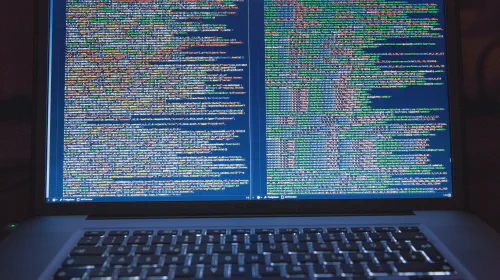What is an Unconfirmed Bitcoin Transaction?
Salomon Kisters
Feb 21, 2023This post may contain affiliate links. If you use these links to buy something we may earn a commission. Thanks!
An unconfirmed Bitcoin transaction denotes that a miner is yet to confirm whatever payments you made. Your transaction will take time and will be confirmed once a miner picks it up and validates it.
Every time someone attempts to transfer their Bitcoin, the transaction goes to a waiting area called “mem pool,” where miners will be notified about the transaction so it can be confirmed.
While the transaction is in the “mem pool,” it is still considered an unconfirmed transaction for the time being.
The Bitcoin Transaction Fee
When someone dispatches Bitcoin to transfer it to someone else, the transaction goes through a network of computers on the blockchain for what’s known as “transaction verification”. A computer reviews and approves the transfer’s validity so the transaction can move forward. These computers are labeled as “nodes” and store previous information regarding the Bitcoin being transferred.
At this point, the nodes authorize the transaction based on their knowledge, meaning they confirm whether or not you own the Bitcoin you are attempting to transfer. However, this only means that the transfer being made is legit. The owner of the Bitcoin is still not updated in the global ledger.
After authorization by the nodes, the transaction joins a waiting room called “memory pool” or “mem pool” for short. For a transaction to be confirmed, it has to be integrated into a new block by a miner so the funds can be moved to the recipient’s crypto wallet. The miner charges a fee for doing this, and this is a cost to the person transferring the funds, called a transaction fee.
While there can be many Bitcoin transactions waiting to be confirmed and cruise forward at any given time, especially during rush hours, there can only be a finite number of transactions that can be approved or mined. Therefore, your transfer will need to wait some time before it will go through.
How to Calculate Transaction Fees
The process of determining a transaction fee is complex. It is calculated based on many factors contributing toward it at the time of the transaction. Your crypto wallet will usually suggest a fair amount that you should attach as the fee for your payment. The sender, and not the recipient, always pays the transaction fee.
Previously, small transactions were free of cost, and some mandatory transactions also had to be carried forward without any charges. But now, every single Bitcoin transfer requires a payment. The transaction fee is conveyed as satoshis per byte, the smallest currency unit.
Each transaction has a size; the more extensive the transaction, the bigger its size will be, and the more time and resources it will require to be integrated into a new block for confirmation. This size is measured in bytes, which tells the miners how much you are willing to pay to advance your transaction.
While all this depends on the amount being transferred, it also depends on the previous history of your Bitcoin transactions. Consequently, every transaction is divided into two parts: input and output.
The input points to all the prior Bitcoin transfers you received, while the output includes the Bitcoin being sent and the change you will send back to yourself. Thus, the higher the satoshi/byte for payment, the more likely it will be picked up by a miner and confirmed.
How to Reduce Transaction Fees
You can try a few techniques to decrease the fee size of your Bitcoin transactions.
The simplest thing you can do is avoid sending Bitcoins during rush hour. When the network is crowded, the transaction fee can skyrocket, and you may pay absurd charges for your transaction. Thus, avoid it altogether when many people are trying to trade on the blockchain.
Additionally, a feature in most crypto wallets, SegWit, permits you to create an input to minimize the size of the information and the transaction as a whole. Most wallets, such as Trezor, Blockstream Green, or Electrum, support this feature.
Talking about wallets, another innovative component of some crypto wallets is “grouping outputs”. This lets you maximize the efficiency of your transactions by grouping numerous payments (outputs) in a single transaction.
Somewhat opposite of this - grouping inputs is more of an advanced strategy for decreasing transaction expenditures. Users send Bitcoin to an address they own when the transaction fees are relatively low or cheap.
This new address, which only has a single input, can now be used to make payments with small transaction sizes.
Why Bitcoin Transactions May Remain Unconfirmed
Most of the time, blockchain dealings go through after some time, but there can be a few reasons why your Bitcoin transaction is still unconfirmed.
A Bitcoin transaction will remain unconfirmed if you attached a fee too small, and no miners were interested in creating a new block for you for that amount. This means your transaction will idly sit in the mem pool since there was no miner to proceed with it.
This can occur more frequently when the blockchain network is exceptionally crowded. Miners will prioritize transactions with an elevated fee size. If your fee size is small, it might not get picked up by a miner and appear unconfirmed.
Another reason this happens could be because you are trying to send on funds you received but are not confirmed. Bitcoins payment with insufficient funds will also appear unconfirmed since the transaction was not adequately funded.
How Long Does a Bitcoin Transaction Take?
Keeping the transaction confirmation in mind, it might take around ten minutes. However, there is no correct answer due to so many factors involved in the total time it takes to confirm a transaction.
Some of these factors comprise the burden on the network or the Bitcoin Network’s hash rate. However, the total time for a transaction might vary significantly from transaction to transaction and can take up to 72 hours.
How to Check Bitcoin Transaction Time?
A few innovative software are available to you for at least estimating how long your transaction will take to confirm based on the network and the factors affecting it.
However, these online tools can only give an estimate and not the actual time. The exact time cannot be determined with 100% accuracy beforehand. It will only be known once the transaction is completed and confirmed.
How to Speed Up Bitcoin Transactions?
You could increase the transaction fee if you need urgent payment. This will boost your transaction in the mem pool and will be more likely mined by a miner, processing your confirmation sooner.
Besides this, you can make transactions when the network is not overloaded and strained with a rising number of transactions. This can be predicted with a memory pool size chart.
Aside from this, Transaction Accelerator Services are available, accelerating your transactions by repeatedly involving more nodes in the network, thus, validating your transaction and pushing it up in the mem pool. This bump can hasten up your transaction.
Using SegWit, which makes your transaction size smaller, you can also speed up your transaction as there will be fewer bytes for the miner to process.
How do I Fix or Recover Unconfirmed Bitcoin Transactions?
It is best to wait 48-72 hours before doing anything. Most of the time miners pick up the transaction and confirm it. If the transaction is still stuck and is not altering in status, you may need to take action.
The most popular option is RBF – Replace-by-Fee, supported by many crypto wallets, which allows you to resend your transaction in the memory pool with a higher price this time.
You can also use the Transaction Accelerator to add your transaction to the upcoming block the miners will mine. They might charge some fee for it.
How to Cancel a Bitcoin Transaction if it is Unconfirmed?
You cannot directly cancel a transaction once the blockchain network has validated it.
A transaction that is yet to be OK’d and has been in the memory pool for a substantial amount of time has probably failed. The nodes which approve the transaction in the first place broadcast it in the memory pool, from where it gets confirmed. Most nodes are set to erase transactions that are not authorized for much time.
The confirmation time varies from node to node but is up to 72 hours. If this happens, the funds will return to your wallet.
Can My Transaction Remain Stuck?
It is possible for a node not to erase your transaction and keep broadcasting it. In this case, you need to use recovery methods to ensure your transaction goes through.
Wrapping up
An unconfirmed transaction signifies payments that have been validated but have not yet been incorporated into a new block.
The confirmation procedure can take up from 1 hour to 72 hours, and many techniques can be utilized to optimize your transaction.
Stay informed with the latest insights in Crypto, Blockchain, and Cyber-Security! Subscribe to our newsletter now to receive exclusive updates, expert analyses, and current developments directly to your inbox. Don't miss the opportunity to expand your knowledge and stay up-to-date.
Love what you're reading? Subscribe for top stories in Crypto, Blockchain, and Cyber-Security. Stay informed with exclusive updates.
Please note that the Content may have been generated with the Help of AI. The editorial content of OriginStamp AG does not constitute a recommendation for investment or purchase advice. In principle, an investment can also lead to a total loss. Therefore, please seek advice before making an investment decision.

Top Reasons Why Your Bitcoin Transaction is Still Unconfirmed
If you've ever transferred cryptocurrency, then you probably have experienced a delay in the confirmation of your transactions. Why is that, and what can you do?

Here Is Why Bitcoin Transactions Take So Long
Why do Bitcoin transactions take so long? Here are the reasons and methods to speed them up.

How to View the Activity of a Bitcoin Address
In this article, we'll guide you on how to check the activity of your bitcoin address so that you can monitor transactions across the blockchain. Let's go.
Protect your documents
Your gateway to unforgeable data. Imprint the authenticity of your information with our blockchain timestamp